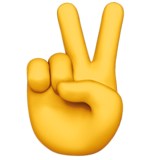Solovyova Marina Viktorovna
I will be glad to hear from you

OUR COMPANY
Heart rate and ASD.
What to know?
What to know?

Heart rate and ASD.
What to know?
What to know?
Heart rate is the heart rate, for which the autonomic nervous system is responsible and which you need to be able to measure in the ASD class.
Determination of heart rate in physical education classes allows us to understand whether the intensity of the muscular load corresponds to the physiological state of the child.
Determination of heart rate in physical education classes allows us to understand whether the intensity of the muscular load corresponds to the physiological state of the child.
It is important to understand that children with ASD are often stressed, and the very "fight or flight" state causes the heart rate to increase due to the release of a large amount of the stress hormone cortisol. Therefore, we must give the load as carefully as possible!
It is important to understand that children with ASD are often stressed, and the very "fight or flight" state causes the heart rate to increase due to the release of a large amount of the stress hormone cortisol. Therefore, we must give the load as carefully as possible!
And also, one of our main tasks when working with children with autism is to teach the child to breathe correctly and restore breathing, to be able to switch and develop self-control, which will help the child to calm down faster and lower the heart rate.
Heart rate values in children differ significantly from those of adults. The data can be found in the table.
As you can see, newborns have an average of 140 beats / min, which is considered space for us adults. But, by the end of puberty, the number of pulsations stops to 60-90.
Heart rate values in children differ significantly from those of adults. The data can be found in the table.
As you can see, newborns have an average of 140 beats / min, which is considered space for us adults. But, by the end of puberty, the number of pulsations stops to 60-90.
And also, one of our main tasks when working with children with autism is to teach the child to breathe correctly and restore breathing, to be able to switch and develop self-control, which will help the child to calm down faster and lower the heart rate.
Heart rate values in children differ significantly from those of adults. The data can be found in the table.
As you can see, newborns have an average of 140 beats / min, which is considered space for us adults. But, by the end of puberty, the number of pulsations stops to 60-90.
Heart rate values in children differ significantly from those of adults. The data can be found in the table.
As you can see, newborns have an average of 140 beats / min, which is considered space for us adults. But, by the end of puberty, the number of pulsations stops to 60-90.

- How to measure:Place two fingers on the carotid artery or on the wrist, count the number of beats in 6 seconds and multiply by 10. You can use other formulas (count 10 seconds), but this works best with children with ASD (shortest).
- When to measure:you can measure at the beginning of the lesson and at the end, or after each part of the lesson and then draw up a graph - measurement time / heart rate and see clearly the dynamics of heart rate. Very useful and it immediately becomes clear what to work on.
By the way: A 2016 study by Adam Gastell (professor and clinical psychologist at the University of Sydney) showed that in people with ASD, decreased heart rate variability is accompanied by poor social skills and cognitive impairment.
Therefore, I wish to all control and productive training of the cardio-respiratory system!
Therefore, I wish to all control and productive training of the cardio-respiratory system!
By the way: A 2016 study by Adam Gastell (professor and clinical psychologist at the University of Sydney) showed that in people with ASD, decreased heart rate variability is accompanied by poor social skills and cognitive impairment.
Therefore, I wish to all control and productive training of the cardio-respiratory system!
Therefore, I wish to all control and productive training of the cardio-respiratory system!
Author of article: Solovyova Marina Viktorovna ©

